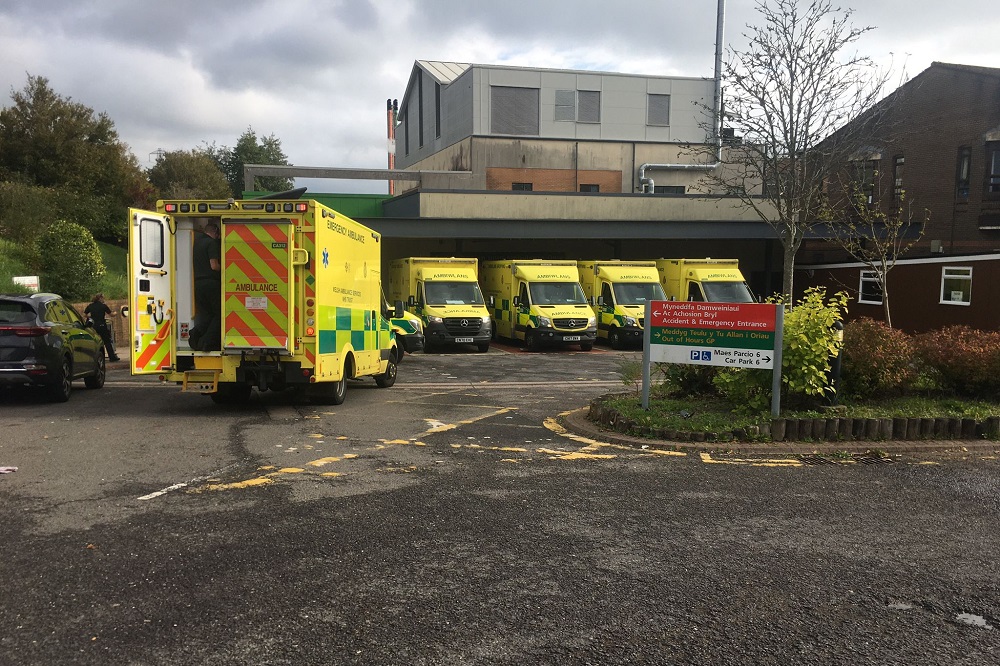Nearly four in ten cancer patients in Wales are diagnosed in emergency settings

New research has revealed that nearly 40% of cancer patients in Wales are diagnosed in emergency setting such as hospital A&E departments.
According to data from the Welsh Cancer Intelligence and Surveillance Unit at Public Health Wales, 37.4 per cent of patients with the eight types of cancer included in the study are being diagnosed in emergency settings.
The cancers most likely to be diagnosed were those with fewer or more general symptoms, such as ovarian, pancreatic, liver and lung cancers. In addition, older people were more likely to be diagnosed via this route.
An analysis by the International Cancer Benchmarking Partnership (ICBP), in collaboration with WCISU and others, published in the Lancet Oncology journal yesterday, looked at the diagnosis of more than 850,000 cancers between 2012 and 2017.
Comparing countries with broadly similar health services (Wales, England, Scotland, Norway, New Zealand, Australia and Canada), it showed that while the emergency diagnosis rates in Wales are similar to that of England (37 per cent) and Scotland (38.5 per cent), this rate lags behind many Australian states and Canadian provinces.
The research also shows that countries with higher levels of cancer diagnosis in emergency settings had poorer cancer survival rates as a result.
Early diagnosis
Professor Dyfed Wyn Huws, Director of WCISU, said: “This study is the first of its kind in the world and shows the importance of early diagnosis of cancer through attending screening, seeking help early for worrying symptoms, access to GP services and investigations and tests, such as scans, and rapid diagnosis centres.
“In countries where there were higher rates of patients not being diagnosed with cancer until they presented at emergency departments, there were corresponding lower rates of survival from the disease.
“The research by ICBP, WCISU and cancer registries in other countries gives a new insight into the difficulties that a later and emergency diagnosis causes. It is disappointing to see that Wales is lagging behind other countries somewhat, but it demonstrates that this is a global problem.
“Inevitably it is those cancers with few or very general symptoms that end up being diagnosed in emergency settings. Data and insight like this analysis shows the impact that this makes on patients.”
Across all the country regions in the research, the percentage of diagnoses through emergency presentation ranged from 24% to 43%.
Pancreatic cancer
When it came to individual cancers, 46% of people with pancreatic cancer were diagnosed in an emergency overall, but the figure was much higher, at 56%, in England and Wales, and was 59% in Scotland.
Meanwhile, New Zealand had 60% of patients diagnosed as an emergency with pancreatic cancer and Norway had 55%, but Ontario in Canada had just 35% and Alberta had 41%.
Some 34% of people in England and Wales and 35% in Scotland were diagnosed with bowel cancer in an emergency, but the figure was 27% in Ontario and 32% in New South Wales in Australia.
Meanwhile, 47% of people in the UK were diagnosed with liver cancer in an emergency, compared to 40% in New South Wales, 32% in Alberta and 28% in Ontario. In Norway the figure was 51%.
The study found that those aged 75 and over were more likely to be diagnosed in an emergency, as were those whose cancer was advanced.
Emergency diagnoses also resulted in a two-fold higher risk of dying in the next 12 months compared to people being diagnosed at other times.
Support our Nation today
For the price of a cup of coffee a month you can help us create an independent, not-for-profit, national news service for the people of Wales, by the people of Wales.




